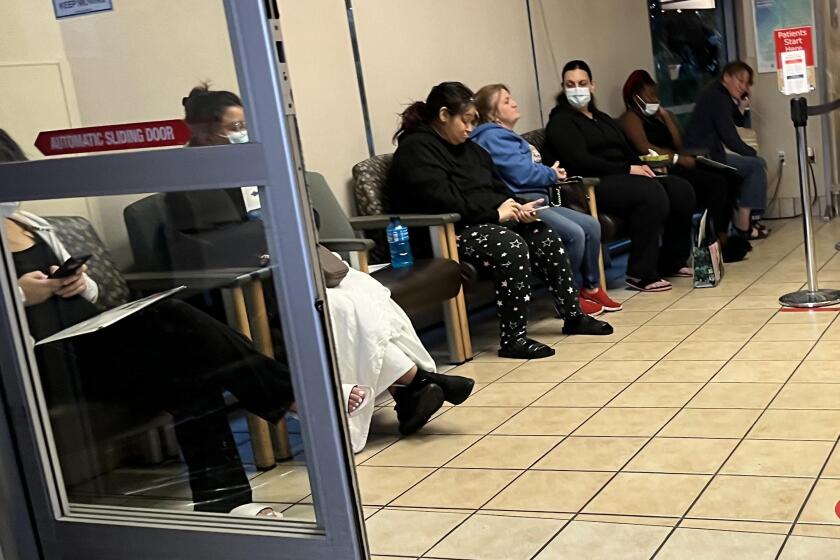Editorial: Newsom could be replaced by someone with a tiny fraction of the vote. Thatâs nuts

On Sept. 14, California voters will decide two questions: whether to oust Gov. Gavin Newsom from office and, if so, who among the 46 candidates is best suited to take over.
Part 1 will be decided by a majority of votes, just like any other ballot measure. But when it comes to Part 2, the math changes. The winner doesnât need more than 50% to win, just a plurality of the votes. That would mean that the next governor, be it a reality TV star or a former big-city mayor, could assume control over the worldâs fifth-largest economy and the stateâs massive bureaucracy with support from only a fraction of voters â maybe even a tiny fraction.
This arrangement is not just perilous for the stateâs stability, itâs undemocratic. In other California elections, including special elections triggered by the death or resignation of an incumbent, a candidate cannot win without the support of a majority of voters. If a candidate doesnât win outright, the top two vote-getters compete in a runoff. The fact that the recall election omits this reasonable step should concern all voters, regardless of whether they want Newsom to keep his job.
This is not the only feature of Californiaâs 110-year-old recall law that needs updating to better serve citizens in the 21st century. Other provisions of the stateâs rules for recall elections strike us as worth reexamining and, in some cases, tweaking before the next recall. And yes, the uptick in recall filings and political polarization over the last decade or so suggest strongly there will be a next time.
Why, for example, does California have among the lowest signature requirements among states that allow for the recall of a state official? Most others require that recall proponents gather signatures equal to 25% of the votes cast in the last election. California requires just 12%. That might have been a high bar in 1911, when the population was scattered across the 770-mile length of the state, but is it too low in 2021, when petitions for ballot measures are gathered en masse by paid staff in parking lots? And does it make fiscal sense to allow a recall to move forward if it would take place less than six months before a regular election? Holding an extra election in 58 counties is costly â approximately $215 million for the Sept. 14 election.
If a poll conducted in July by the Public Policy Institute of California is any indication, most Californians support revisions to the law. Though the pollsters found strong support overall for the stateâs recall provision (86% of 1,569 respondents), a significant share, 66%, thought the recall process ought to be overhauled. Among the changes they supported is establishing a standard for removal on specific grounds of misconduct, such as malfeasance, neglect of duties or criminal convictions, as several other states have; currently, a California governor can be recalled for any reason. The poll also found support for increasing the number of signatures it takes to trigger a recall.
There are other provisions that deserve scrutiny: Should the recall election be a single question, followed by a separate election for a replacement or by the elevation of the lieutenant governor? Should a recall target be allowed to run on the replacement ballot â that is, could Newsom be a candidate to replace Newsom? These questions should be a starting point for a discussion about reforming the recall rules. And it must begin immediately, even before the Sept. 14 election.
To that end, we support the idea of creating a bipartisan commission to build a foundation for a proposed constitutional amendment to be placed by the Legislature on a future state ballot. We rarely support these type of commissions, as they are often convened as an excuse to delay real reforms. But altering this important tool of direct democracy should not be rushed or undertaken by one political party, as other recent recall tweaks have been. Proper study would allay concerns that any changes were partisan efforts to rig future recalls in the favor of a particular party.
Gov. Hiram Johnson, the architect of Californiaâs direct democracy system, envisioned the recall as one of a trio of reforms, along with ballot initiatives and referendums, that âgive to the electorate the power of action when desired, and they do place in the hands of the people the means by which they may protect themselves.â
What they needed protection from in 1911 was a political structure that had been hijacked by the powerful Southern Pacific Railroad.
In 2021, voters need protection from demagogues, wacky candidates and a marginalized political party that canât win legitimately in regular elections and resorts to exploiting this outdated law to unfairly seize power.
More to Read
A cure for the common opinion
Get thought-provoking perspectives with our weekly newsletter.
You may occasionally receive promotional content from the Los Angeles Times.









